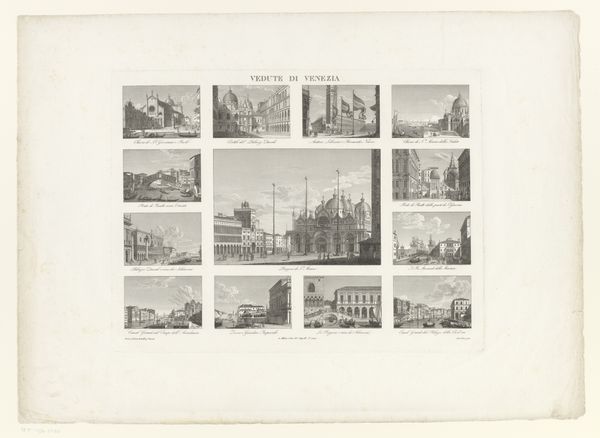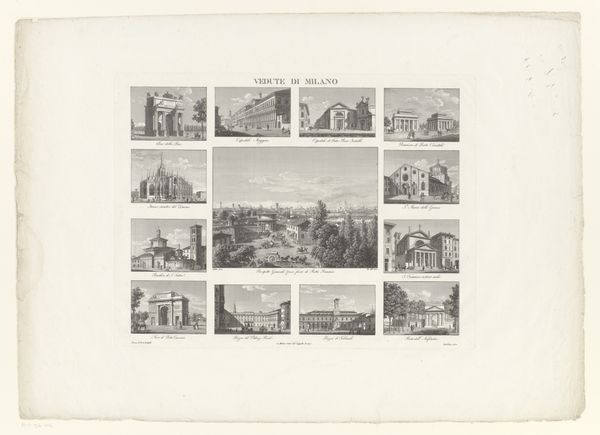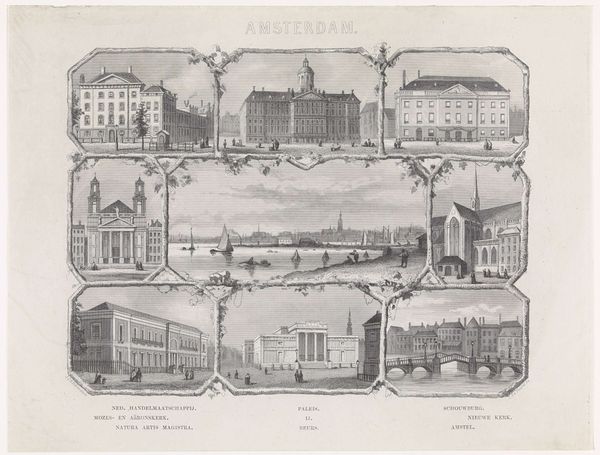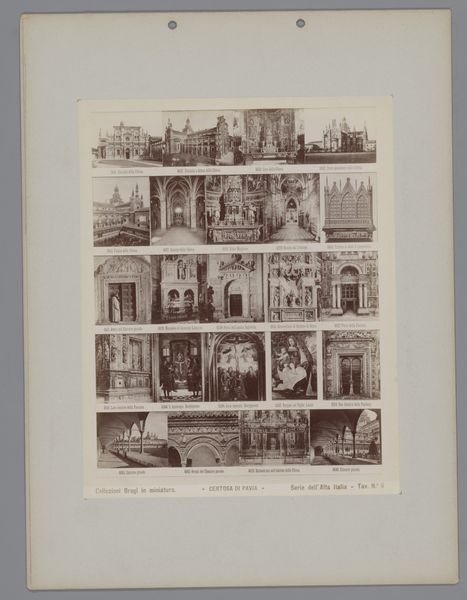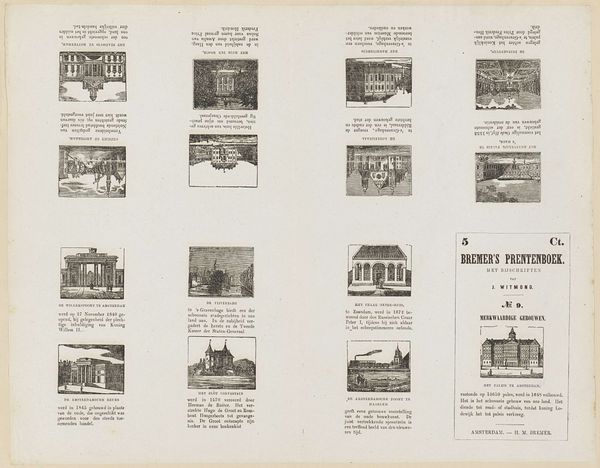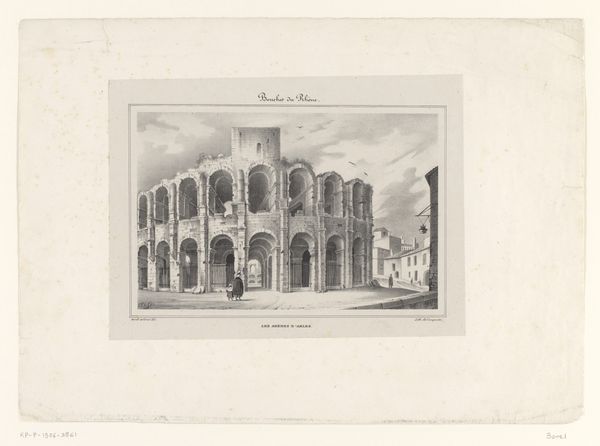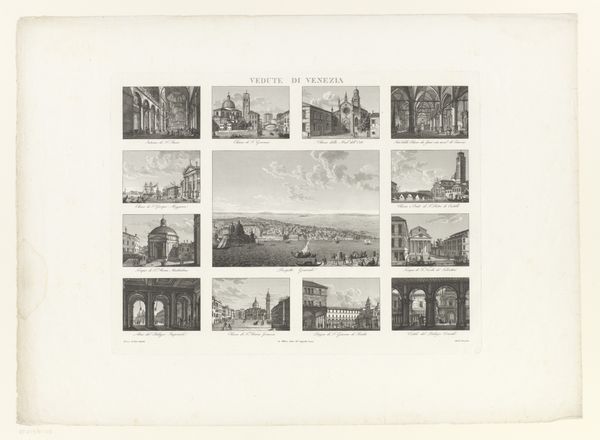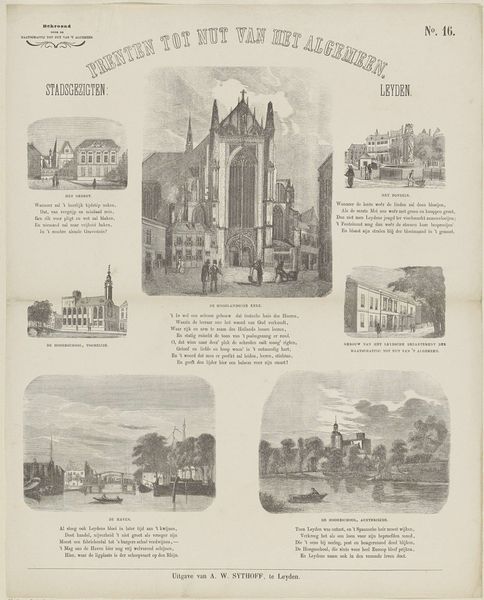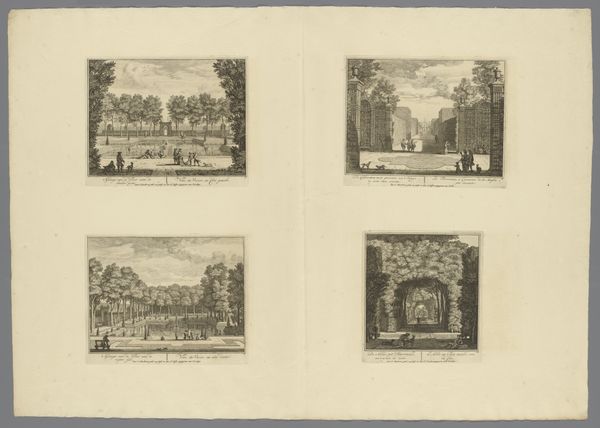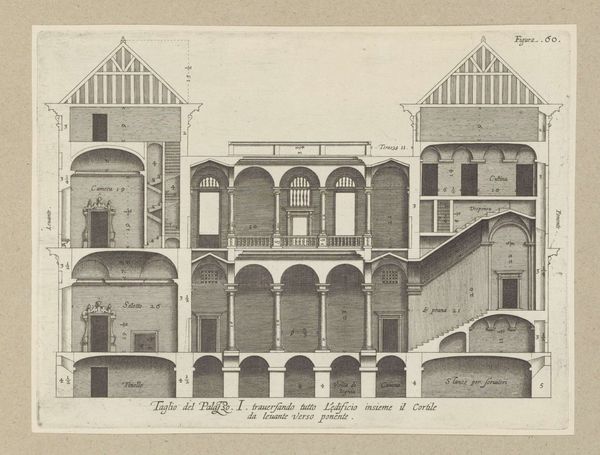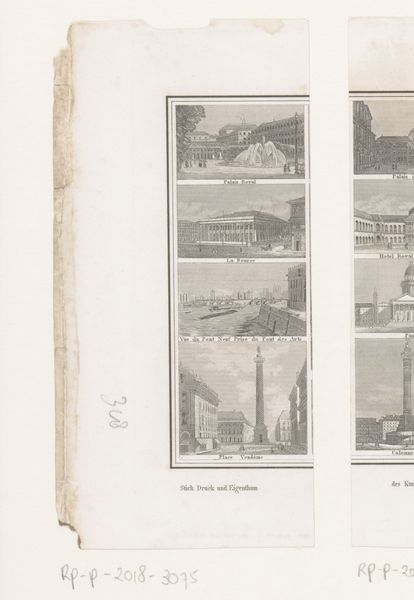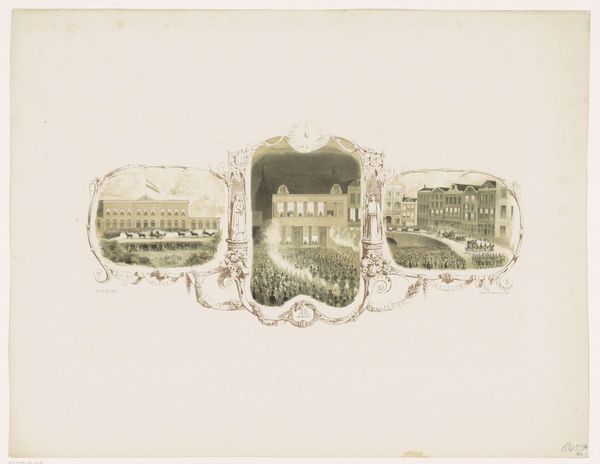
print, engraving, architecture
#
neoclacissism
# print
#
old engraving style
#
cityscape
#
engraving
#
architecture
Dimensions: height 337 mm, width 445 mm
Copyright: Rijks Museum: Open Domain
Curator: Welcome. Today, we're examining "Dertien gezichten op Milaan," or "Thirteen Views of Milan," an engraving made sometime between 1786 and 1850, now held in the Rijksmuseum. Editor: It presents a bird's-eye view of the city. Stark and somehow imposing. Thirteen little vignettes showing architecture as symbols. There's something about this method that frames city history, quite effectively. Curator: The composite nature of this piece speaks to a prevalent practice in the late 18th and early 19th centuries—an era that loved ordered categorization, but this approach elevated architecture to be almost…a civic monument. These weren’t just buildings. Editor: True, but consider the engraving process. This piece comes alive in stages, layers of human interaction, a very intentional process to display architecture to this kind of rigid perspective. Note the clean lines, it gives a sense of permanence through mass replication. How these reproducible images become powerful, political symbols in themselves! Curator: Absolutely, prints circulated widely, shaping public perception of cities, architecture, and nation-states. We see the rise of Neoclassicism throughout, promoting specific values. I mean, consider the clear intent to present Milan in the best light during a period of significant upheaval in Europe. These images helped create identity! Editor: Precisely! And think about the labor embedded within, crafting a master copper plate by a professional, generating identical images, circulating within the supply chain. Did this give this a form of authority? Were these prints tools to standardize perspectives? The medium amplifies its function, not just shows off what Milan looks like. Curator: And the distribution through books or individual sales further embeds that identity in popular culture, reaching various socio-economic groups to instill an elevated civic ideal. Milan had to present a glorious, collected image. Editor: I find it compelling how such methodical artistic production serves agendas larger than simple aesthetic delight or archival function, as in the image becomes an agent itself! I now have an elevated interest in Milan, as odd as it may be. Curator: This work prompts a wider recognition about images, history and collective consciousness during revolutionary transformation.
Comments
No comments
Be the first to comment and join the conversation on the ultimate creative platform.
